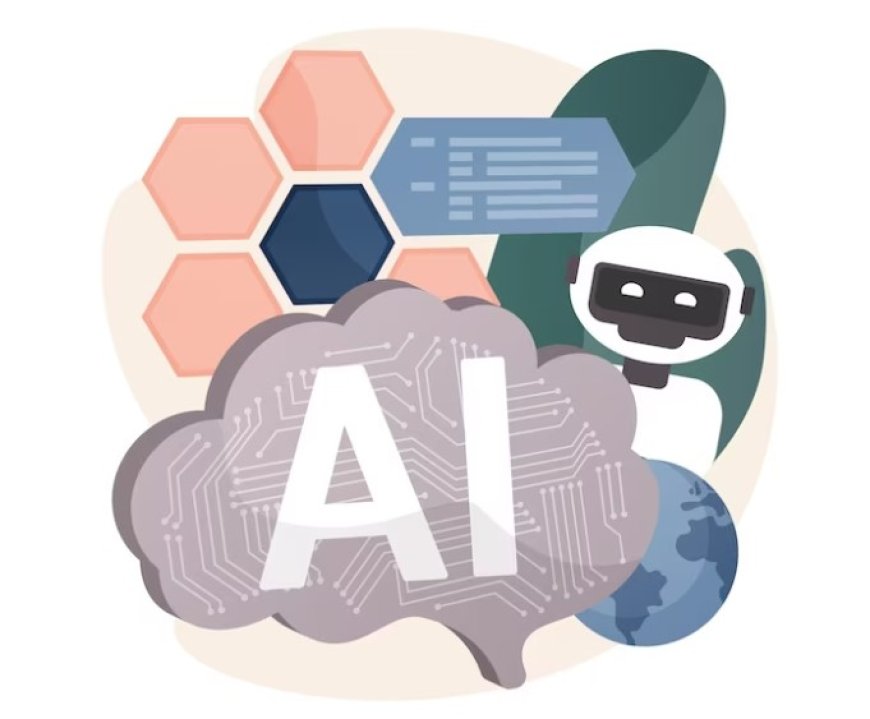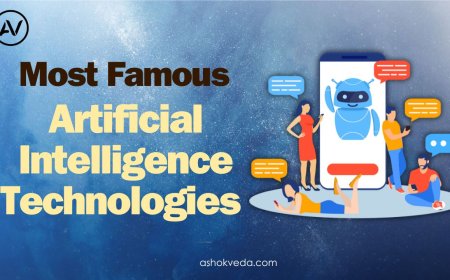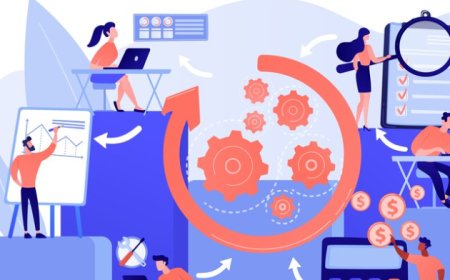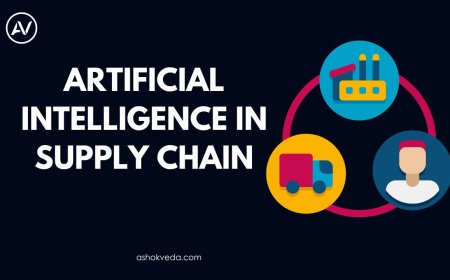Types of Artificial Intelligence
Explore the various types of artificial intelligence (AI) systems and their applications. Learn about the key categories and their impact on industries and technology.

Artificial Intelligence (AI) is a smart computer technology that helps machines learn and think like humans. Imagine a computer that can understand, learn, and make decisions all on its own! That's what AI does. It's like having a really clever friend in the form of a computer.
AI is super important. It's everywhere! You can find it in your smartphones, in self-driving cars, and even in helpful virtual assistants like Siri or Alexa. It's like having a personal assistant that never gets tired or makes mistakes.
Think about when you ask your phone for directions or when it suggests what you might want to watch on TV. That's AI in action! It makes our lives easier and more convenient.
Now, let's break down why this matters. Imagine if your computer couldn't understand what you were saying or didn't know how to help you find things online. It would be frustrating, right? That's why AI is a big deal. It's making technology work better for us, so we can do more things easily and quickly. So, when we talk about AI, we're talking about giving computers the power to think and learn, which is changing the way we live and interact with technology. It's pretty amazing!
The Diversity Of AI
When we start talking about Artificial Intelligence (AI), things can get a little complicated. One reason for that is the incredible diversity in AI. It's like a big family with many different members, each with their own skills and abilities. Some AI can chat with you like a friendly neighbor, some can drive cars, and some can even understand and talk in different languages. It's a bit like having different superheroes with unique powers.
Now, why do we need to sort them out into categories? Well, think about your closet. You don't just throw all your clothes in there without organizing, right? You have sections for your shoes, shirts, and pants. It's the same with AI. We categorize them to understand what each type can do and how it helps us.
By putting AI into groups, we can figure out which AI is best for certain jobs. It's like choosing the right tool for a job. If you want to dig a hole, you need a shovel, not a hammer. Similarly, if you want to understand what people are saying on social media, you'd use one type of AI. But if you want to play chess, you'd use a different type of AI.
So, this diversity of AI is exciting, but it can also be a little overwhelming. That's why we sort them into categories. It's like giving each superhero their own special job to do. It helps us make the most of these incredible technologies and understand how they fit into our lives. Plus, it's just plain fun to see all the different superpowers AI can have!
What are the types of Artificial Intelligence?
Narrow AI (Weak AI):
Narrow AI is like a specialist. It's really good at one specific thing but not much else. For example, think of Siri or Alexa. They're great at answering questions and following commands, but they don't understand everything you say.
You see Narrow AI all around you! It's in things like virtual assistants, recommendation systems (like when Netflix suggests what to watch next), and even in self-driving cars. They're like experts in their own little worlds, helping out with specific tasks.
General AI (Strong AI):
General AI is like the super genius of AI. It can handle a wide range of tasks, just like how humans can. It can play games, do math, and even have a conversation with you. But, we're still working on getting there. It's like trying to create a computer that's as clever as a human.
Imagine a computer that can think and learn just like you do. It's a bit like having a really smart friend who happens to be a computer. We're not quite there yet, but scientists are working hard to make it happen.
Superintelligent AI:
Now, this is the stuff of science fiction. Superintelligent AI would be even smarter than the smartest human. It could solve incredibly complex problems, make scientific discoveries, and maybe even help us understand the mysteries of the universe. But, right now, it's more of a dream for the future.
If we ever achieve superintelligence, it could lead to some amazing breakthroughs. But, there are also challenges and concerns. We'd have to make sure it's used for good and doesn't cause any harm. It's like having a really powerful tool – you want to use it wisely.
Machine Learning:
Machine Learning is like teaching a computer to learn on its own. It's how AI gets better at things with practice. For example, it's what helps your email filter out spam or your camera recognize your friends' faces. It's a bit like training a dog to do tricks, but with computers.
Within Machine Learning, there are different ways computers can learn. There's supervised learning (where the computer is given examples to learn from), unsupervised learning (where it learns from patterns in data), and reinforcement learning (where it learns through trial and error).
Deep Learning:
Deep Learning is like the clever cousin of Machine Learning. It's all about using computer systems inspired by the human brain – these are called neural networks. Deep Learning is what makes things like voice and image recognition work. It's how your phone knows it's you when you use facial recognition.
Deep Learning is behind a lot of cool stuff. It's what powers speech recognition in virtual assistants, image recognition in your photos, and even self-driving cars. It's like the brainpower behind the scenes, making all these technologies smarter.
Natural Language Processing (NLP):
NLP is the language expert of AI. It's all about making computers understand and generate human language. It's what allows chatbots to have conversations with you and helps with language translation. When you talk to Siri or ask Google a question, that's NLP at work.
NLP has made talking to computers more natural. You can ask for directions, find information, or even have a chat with a computer program. It's like having a helpful friend who knows a lot of languages and can assist you with words and sentences.
Computer Vision:
Computer Vision is how AI sees the world. It's all about making computers understand and interpret images and videos. Think of it as giving computers the ability to "see" like humans. It's what allows self-driving cars to navigate, security cameras to spot intruders, and your phone to recognize your face.
Computer Vision has a bunch of practical uses. It helps with facial recognition, which unlocks your phone, or tracks your friends' faces in photos. It's also used in things like medical imaging to detect diseases or in factories to check the quality of products.
So, these different types of AI are like tools in a big toolbox. Each one has its own special job, and they're making our world a more interesting and efficient place. They're helping us do things better and making technology feel more like a smart friend who understands and assists us. Whether it's recognizing your face in a photo, giving you directions, or even trying to become as clever as a human, AI is changing the way we live and interact with technology. It's pretty amazing!
Expert Systems:
Think of an expert system as a super-smart computer program that knows a whole lot about a specific topic, like a doctor who knows everything about medicine. It's loaded with tons of information and rules. When you ask it questions about its field, it uses all that knowledge to give you really good answers. For example, a medical expert system can help diagnose illnesses or recommend treatments. It's like having a brilliant specialist in your computer!
Expert systems try to mimic how a human expert thinks and makes decisions. They use a bunch of rules and information to come up with solutions to problems. It's kind of like having a conversation with a human expert, but you're chatting with a computer instead. They're not perfect, but they can be incredibly helpful.
Robotics and Automation:
AI and robots make a great team. AI gives robots the brainpower to do things without human help. Robots can do tasks that are dangerous, boring, or really precise. For example, in a car factory, robots can assemble cars quickly and accurately. In your home, there are robot vacuums that clean your floors all by themselves.
You've probably heard about self-driving cars. They use AI to "see" the road, make decisions, and drive safely. Then there are drones that can fly and capture images all on their own, thanks to AI. In warehouses, robots help move stuff around, and they use AI to avoid bumping into things. These robots and automated systems are like helpful, smart assistants in the physical world, taking over tasks so we can focus on more interesting things.
Weak AI vs. Strong AI:
Narrow AI (Weak AI) is like a specialist, really good at one thing. It's awesome at tasks like understanding your voice commands, but it can't do much else. General AI (Strong AI), on the other hand, would be like a super-genius who can do all sorts of things, just like a human. It's what you see in science fiction, like robots that can have conversations and solve any problem. But right now, we mostly have Narrow AI because creating General AI is super tricky.
Narrow AI can do its specialized job really well, but it can't handle tasks outside its area of expertise. For example, a voice assistant can't play chess like a pro. General AI, if we ever achieve it, could handle lots of different tasks, just like a human. But creating it is tough because it needs to understand the wide world of human knowledge and common sense, which is really challenging for computers. So, while Narrow AI is doing great in its area, General AI is a big, exciting challenge for the future.
So, these different types of AI are like tools in a big toolbox. Each one has its own special job, and they're making our world a more interesting and efficient place. They're helping us do things better and making technology feel more like a smart friend who understands and assists us. Whether it's recognizing your face in a photo, giving you directions, or even trying to become as clever as a human, AI is changing the way we live and interact with technology. It's pretty amazing!
There are many types of AI, like Narrow AI, General AI, and more. Each type has its own special skills and jobs, just like tools in a toolbox. It's important to understand these AI types because they're changing the way we live and use technology. They help our phones get smarter, our cars drive themselves, and even assist scientists in big discoveries.
But here's the exciting part: AI keeps growing and changing. It's like a river that never stops flowing. New ideas and technologies are always popping up. So, it's important to keep learning and stay curious because the AI world is always evolving. Who knows what amazing things AI will do next? It's an adventure we're all on together!




































